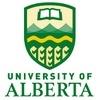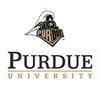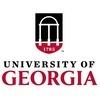Explore all the information on
Poultry welfare
Proper animal welfare involves providing the proper housing, management, nutrition, disease prevention and treatment, responsible care, humane handling and, when necessary, humane euthanasia. These factors allow for the most optimal and humane growing environment. The concept of animal welfare includes three elements: the bird’s normal biological functioning, its emotional state and its ability to express its natural behaviors. Improving animal welfare can be accomplished through offerings like poultry feed enrichment, which can reduce stress, thereby increasing performance, productivity and profitability. Animal welfare is currently a major requirement for intensive poultry production. Beak trimming, stocking density, free access to feed, heat stress, and air pollutants became important issues, which are regulated in several countries. Animal welfare is observed by watching how birds naturally behave and even by looking at mortality stemming from aggressive behaviors.
The parents of broilers are defined as broiler breeders. In contemporary poultry industry practices, there are many selection criteria for broiler breeders. Beyond selecting for future broilers, maximizing broiler breeder characteristics (i.e. reproductive success) is also important. In essence, we are not only selecting for...
Comments : 1
Recommendations: 1
Dan Wood (Potters Poultry) explains the success he's found in promoting poultry through social media in this interview with PSA. Let's Squawk About It is a monthly interview segment by the Poultry Science Association....
Comments : 1
Recommendations: 0
Allowing poultry access to vegetated, woody spaces will benefit poultry welfare. One system that incorporates the production of vegetation and livestock, including poultry, is called a silvopasture system. Woody vegetation can provide a source of income for producers while providing preferred habitat for chickens. Silvopasture...
Comments : 0
Recommendations: 1
For many years reactive oxygen species (ROS) production in biological systems has been considered to be detrimental. However, a pleasant face of ROS has received recently tremendous attention. Indeed, it has been proven that ROS participate in cell signalling, transcription factors regulation and vitagene activation to maintain optimal cellular redox balance and to provide an effective stress adaptation [1]. In fact, redox biology is a very rapidly developing area of modern biological...
Comments : 1
Recommendations: 1
1. Introduction The occurrence of ‘wet litter’ in meat chicken sheds is associated with concerns regarding animal welfare, flock health, food safety, environmental impacts and reductions in production efficiency. Mitigating wet litter will only be achieved when there is thorough understanding of the multidimensional causal factors. This will require a multidisciplinary approach to understand the hydrology in the meat chicken shed micro-environment; the biological...
Comments : 0
Recommendations: 1
Laying hens are female chickens raised for egg production. The egg production system in the US is currently undergoing a transition from conventional cages to cage-free housing systems. The number of cage-free housing has increased from 4% hens in 2004 to 28% at the end of 2020 (USDA-NASS, 2021). Cage-free systems provide space...
Comments : 0
Recommendations: 0
by Sam Shafer
Poultry scientists find hens prefer lower UVA/B light
A new Poultry Science ® study suggests hens do like sunlight—just not too much. In fact, by monitoring hen behavior under different strengths of UVA and UVB light, the researchers found that hens prefer to spend more time in lower levels...
Comments : 0
Recommendations: 1
A highly pathogenic strain of Avian Influenza (sometimes called bird flu) is currently spreading across the United States. The virus has been detected in six States since January 2022 (see Figure 1). Avian influenza: about the...
Comments : 0
Recommendations: 0


A Natural Choice for Growth Enhancement in Farm Animals - 3 ESSDENDIS
Suggested link
by Sam Shafer
Farms can take three specific steps to prevent infections in broilers
In the battle between biosecurity and disease, which safety measures have the best track records at preventing infections from spreading?
For a new study, a team of poultry scientists in Germany compared biosecurity measures on farms with the incidence of cellulitis, a bacterial skin infection that can make broiler carcasses unfit for...
Comments : 0
Recommendations: 0
Hypothesis Guanidinoacetic acid (GAA) is synthesized in the liver and kidneys from arginine (Arg) and glycine (Gly) and subsequently methylated by S-adenosylmethione to creatine (2). Heat-stressed birds respond to the presence of higher uric acid concentration and changes in electrolyte balance by increasing the usage of osmoprotectants. These osmolytes are viable endogenous precursors for Gly (3). On the other hand, high supplemental lysine level on modern genetic broiler...
Comments : 2
Recommendations: 1
...
Comments : 0
Recommendations: 0
...
Comments : 0
Recommendations: 0
Background & Objectives Bedding materials and depth of beddings are vital elements for litter management, which could directly or indirectly alter the growth performance of poultry. In the poultry industry, duck meat is the second most widespread poultry sector in the world after chicken meat, and Pekin ducks have become the most efficient broiler duck type popular in the Asian region. This study aimed to investigate the appropriate depth of bedding material (rice husk) for...
Comments : 0
Recommendations: 0
Background & Objectives Transportation is induced immediate stress in poultry and the reaction of poultry to stress depends on transport duration, physiological status and environment. Additionally, transport stress alters both the metabolic responses and physiological conditions of animals resulting in undesirable changes in meat quality. These factors lead to economic losses which are caused by a decrease in meat quality along with animal welfare. Crating density is a...
Comments : 0
Recommendations: 0
.jpg&w=3840&q=75)

All-in-one mycotoxin extraction method for faster time-to-results - Myco 5-in-1 PLUS
Suggested link
INTRODUCTION Chicken domestication started with red junglefowl (Gallus gallus; ALBINO & TAVERNARI 2010) and is native to multiple regions in Southeast Asia (HATA et al. 2021). These birds were first used as fighting animals or in rituals. Then, breeding the species began to be treated as an economical activity to generate profit from the production of meat and eggs (NÚÑEZ-LEON et al. 2019, RUBIN et al. 2010). During this period, animal welfare...
Comments : 0
Recommendations: 1
Drinking water is one of the transmission methods of Avian Influenza (AI). Water sources can be contaminated by infected materials and transmitted to poultry farms. The risk of the chicken being exposed to the virus via water is high. When AI hit the poultry industry in the US in 2015, water samples were tested positive for the virus. Taking samples from poultry drinking water lines is an efficient way to conduct avian influenza surveillance. Water treatment is an important control strategy...
Comments : 0
Recommendations: 2
INTRODUCTION Footpad dermatitis (FPD) is present in many different types of broiler production systems. In 1 study, Pagazaurtundua and Warriss (2006) estimated prevalence of FPD ranged from 9.6 to 98.1% depending on the housing system used. This common issue has a large impact on growers because the presence of FPD is associated with decreased live weight and leg meat yield and increased carcass condemnations (Hashimoto et al., 2013). These condemnations can have a massive...
Comments : 1
Recommendations: 0
Though paper evaporative cooling pads have been used by poultry producers for decades, plastic pads are a relative new phenomenon. As with any new product, there are a lot of questions. By far the most common question is whether plastic pads can produce the same level of air cooling as traditional paper pads. In short, the answer is yes. But just...
Comments : 1
Recommendations: 2
There is some evidence that commercial meat chickens prefer to access the range through ‘favoured’ pop-holes (Taylor et al., 2017); however what makes pop-holes attractive or aversive is unknown. Therefore, we aimed to i) determine the most aversive stimuli associated with pop-holes and ii) identify the most effective artificial structure to minimise aversion. We hypothesised that the simulation of wind, UV light and high light intensity at an artificial pop-hole would be...
Comments : 0
Recommendations: 0
I. INTRODUCTION The chicken meat industry has made tremendous production gains through advanced utilisation of genetic selection and nutritional understanding to ensure that chicken meat remains a low cost, desirable product that consumers continuously demand (Zuidhof et al., 2015). The industry now requires new approaches to further advance efficiency and production, with developmental programming at the forefront of industry development (Hynd et al., 2016). Developmental...
Comments : 0
Recommendations: 1
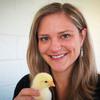


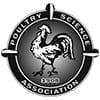












.jpg&w=3840&q=75)



